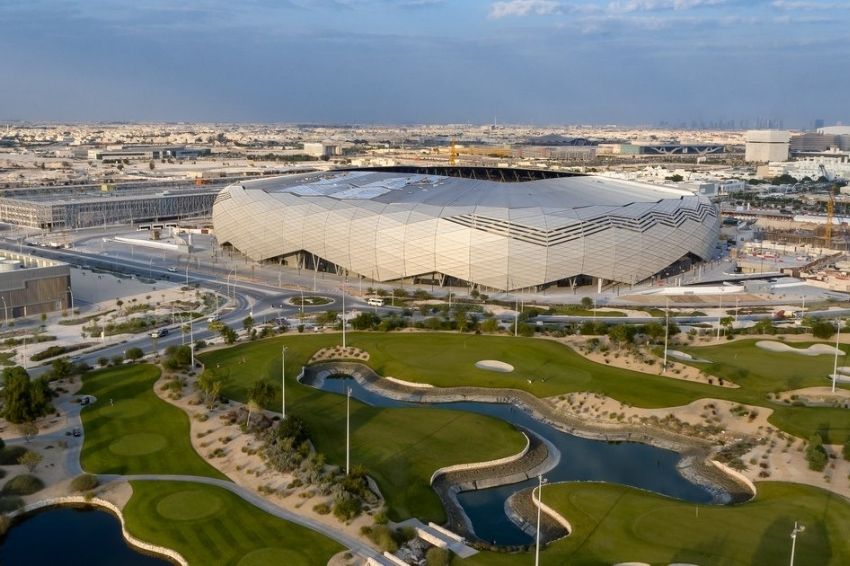For the first time in the history of world Cups the tournament will be held between the months of November and December. Due to the high temperatures that affect Qatar during the middle of the year, when the World Cup is usually held, the FIFA decided to change in 2015.
Due to this, the Qatar chose to develop innovative cooling technology in stadiums, powered by solar energy. The objective is for refrigeration to alleviate exposure to high temperatures, between 40-50 °C, for both athletes and journalism teams, workers and the general public.
The stadium Education City, in the capital Doha, is one of the host camps for the 2022 World Cup and has a structure specially designed to prevent people from suffering from extreme heat, keeping the internal temperature of the place always below 27 °C.

The arena has an area of 233 thousand square meters, space for 45,350 spectators and the sides extend and wrap around the playing field, helping the cooling system to work. “This is the first stadium in the world capable of cooling such an open area, with a clean fuel such as photovoltaic solar energy”, highlighted the main designer of the Spanish architecture firm Fenwick Iribarren Architects, responsible for the works.
In addition to solar-powered cooling technology, at least 55% of the materials used in the stadium design come from sustainable sources and 28% of the construction materials have recycled content, minimizing the carbon footprint. Throughout the site, native and drought-tolerant plant species were used throughout the landscaping.
Read too
Find out which stadiums in Brazil use photovoltaic solar energy
GSAS Certification
Another point to be highlighted at the World Cup held in Qatar is that each tournament location will obtain GSAS (Global Sustainability Assessment System) certification. A site's level of sustainability is certified according to several categories, including design, construction, energy and water use.
Each stadium is on track to receive a minimum four-star GSAS rating for design, construction and construction. Education City and Al Bayt Stadium achieved five-star ratings.

Recycling in stadiums
To limit the carbon footprint, all Qatar 2022 projects have implemented measures to organize waste segregation and management during the construction phase. Stadium sites diverted solid waste through recycling.
For example, most of the waste generated at Al Janoub Stadium (90%) and Ahmad Bin Ali Stadium (84%) was recycled during construction. Recycling systems will also be available during game days.
Sustainable public transport
The new Doha metro will be responsible for transporting thousands of fans across the country during the World Cup. Its electrical system uses regenerative braking systems that help reduce the carbon footprint.
Qatar's sustainable transport plans also extend to EVs (electric vehicles) and buses. In collaboration with KAHRAMAA, charging stations for the electrified are being installed in various locations across the country.
Electric scooters and bicycles are also available outdoors, including in parks and the Doha Corniche. Meanwhile, a fleet of electric buses will be used to transport fans between their accommodation and the competition venues.
800 MW solar plant
The Al Kharsa'ah solar power plant will also help reduce the country's carbon footprint. Located 80 km west of Doha, the 800 MW photovoltaic plant will limit Qatar's dependence on gas for power generation.
Curiosities about the temperature in Qatar
Located in a desert region, the characteristic climate of the Middle Eastern country is very hot and arid, very dry and with little humidity. The region has most months with high temperatures and a shorter period with milder weather.
Between March and October, the hottest months of the year in the country, Qatar always records temperatures above 30 °C, including during nights and early mornings. At the height of the heat, it is common to be between 40 °C and 50 °C, with the thermal sensation reaching around 60 °C.
On the other hand, in the months of November and February, when the emirate experiences lower temperatures, the weather drops drastically compared to the other months. During the World Cup period, weather conditions may fluctuate with a minimum of 10 °C and a maximum of 20 °C.
















